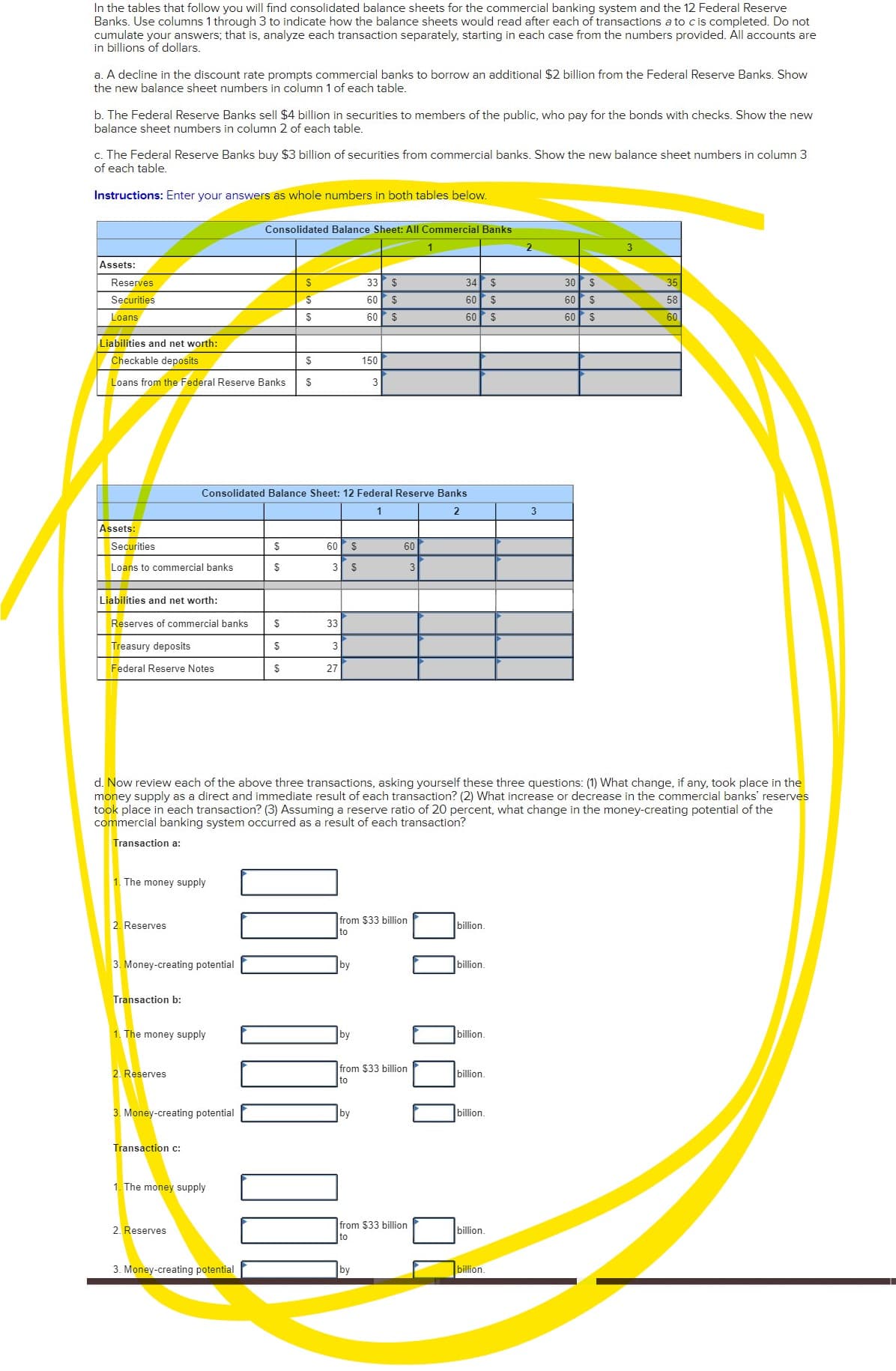In the tables that follow you will find consolidated balance sheets for the commercial banking system and the 12 Federal Reserve Banks. Use columns 1 through 3 to indicate how the balance sheets would read after each of transactions a to c is completed. Do not cumulate your answers; that is, analyze each transaction separately, starting in each case from the numbers provided. All accounts are in billions of dollars. a. A decline in the discount rate prompts commercial banks to borrow an additional $2 billion from the Federal Reserve Banks. Show the new balance sheet numbers in column 1 of each table. b. The Federal Reserve Banks sell $4 billion in securities to members of the public, who pay for the bonds with checks. Show the new balance sheet numbers in column 2 of each table. c. The Federal Reserve Banks buy $3 billion of securities from commercial banks. Show the new balance sheet numbers in column 3 of each table
In the tables that follow you will find consolidated balance sheets for the commercial banking system and the 12 Federal Reserve Banks. Use columns 1 through 3 to indicate how the balance sheets would read after each of transactions a to c is completed. Do not cumulate your answers; that is, analyze each transaction separately, starting in each case from the numbers provided. All accounts are in billions of dollars.
a. A decline in the discount rate prompts commercial banks to borrow an additional $2 billion from the Federal Reserve Banks. Show the new balance sheet numbers in column 1 of each table.
b. The Federal Reserve Banks sell $4 billion in securities to members of the public, who pay for the bonds with checks. Show the new balance sheet numbers in column 2 of each table.
c. The Federal Reserve Banks buy $3 billion of securities from commercial banks. Show the new balance sheet numbers in column 3 of each table.
SEE PICTURE !!!

Trending now
This is a popular solution!
Step by step
Solved in 2 steps with 3 images









